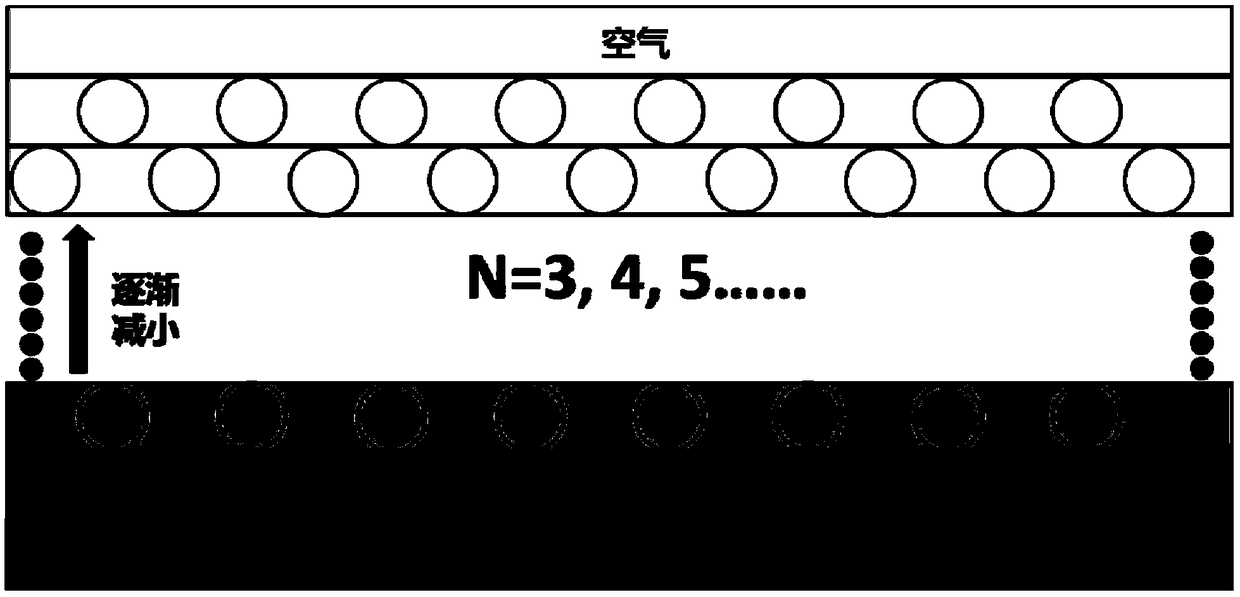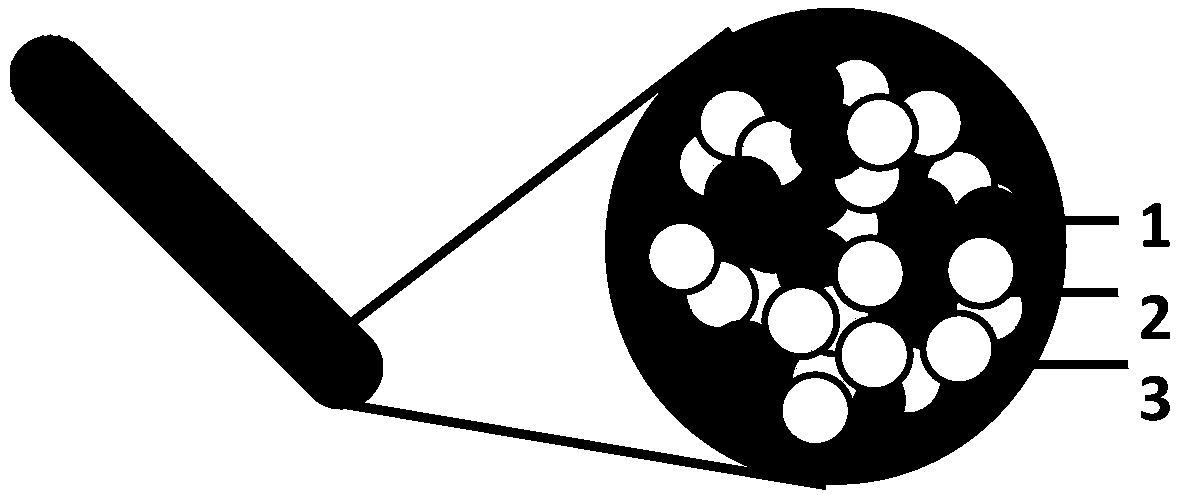Wave-absorbing gradient material based on additive manufacturing technology and preparation method thereof
A gradient material, additive manufacturing technology, applied in additive processing, magnetic field/electric field shielding, electrical components, etc., can solve the problems of poor impedance matching between absorbing materials and free space, poor free space impedance matching, narrow absorption frequency band, etc. , to achieve the effect of acid and alkali resistance and oxidation resistance enhancement, enhanced absorption effect, and high absorption strength.
- Summary
- Abstract
- Description
- Claims
- Application Information
AI Technical Summary
Problems solved by technology
Method used
Image
Examples
Embodiment 1
[0053] A preparation method of a wave-absorbing gradient material based on additive manufacturing technology, comprising the steps of:
[0054] (1) Place the polycrystalline iron and zinc oxide in a blast drying oven at 80° C. for 6 hours, and the particle size of the nano-absorbent is 1-100 nm;
[0055] (2) Dry nylon 12 at 40°C for 8 hours in a blast drying oven;
[0056] (3) 10% of the nano-absorbent in the step (1) and 90% of the polymer in the step (2) were mixed in a high-speed mixer for 5 minutes to obtain a compound;
[0057] (4) Mixing and plasticizing the mixture in step (3) through a twin-screw extruder at 80° C. for 2 hours at a screw speed of 30 rpm / min, and cooling the plasticized material;
[0058] (5) crushing the plasticized material in step (4) into particles of 1-10 mm, adding the crushed material into a single-screw wire extruder at a screw speed of 10 Hz, and preparing a wire with a diameter of 1 mm;
[0059] (6) Use Dufen G30353D printer to perform fusio...
Embodiment 2
[0061] A preparation method of a wave-absorbing gradient material based on additive manufacturing technology, comprising the steps of:
[0062] (1) Dry carbonyl iron and tin oxide in a blast drying oven at 100°C for 9 hours, and the particle size of the nano-absorbent is 1-100nm;
[0063] (2) Dry the acrylonitrile-butadiene-styrene in a blast drying oven at 60°C for 16 hours;
[0064] (3) 50% of the nano-absorbent in the step (1) and 50% of the polymer in the step (2) were mixed in a high-speed mixer for 5 minutes to obtain a compound;
[0065] (4) Mixing and plasticizing the mixture in step (3) through a twin-screw extruder at 200° C. for 18 hours at a screw speed of 60 rpm / min, and cooling the plasticized material;
[0066] (5) crushing the plasticized material in step (4) into particles of 1-10 mm, adding the crushed material into a single-screw wire extruder at a screw speed of 30 Hz, and preparing a wire with a diameter of 2 mm;
[0067] (6) Use Dufen G3035 3D printer t...
Embodiment 3
[0069] A preparation method of a wave-absorbing gradient material based on additive manufacturing technology, comprising the steps of:
[0070] (1) Dry iron nitride and manganese oxide in a blast drying oven at 120°C for 12 hours, and the particle size of the nano-absorbent is 1-100nm;
[0071] (2) Dry the polyether ether ketone in a blast drying oven at 70°C for 24 hours;
[0072] (3) 40% of the nano-absorbent in the step (1) and 60% of the polymer in the step (2) were mixed in a high-speed mixer for 10 minutes to obtain a compound;
[0073] (4) Mixing and plasticizing the mixture in step (3) through a twin-screw extruder at 150° C. for 8 hours at a screw speed of 100 rpm / min, and cooling the plasticized material;
[0074] (5) crushing the plasticized material in step (4) into particles of 1-10 mm, adding the crushed material into a single-screw wire extruder at a screw speed of 50 Hz, and preparing a wire with a diameter of 3 mm;
[0075] (6) Use Dufen G3035 3D printer to ...
PUM
| Property | Measurement | Unit |
|---|---|---|
| Diameter | aaaaa | aaaaa |
| Diameter | aaaaa | aaaaa |
| Diameter | aaaaa | aaaaa |
Abstract
Description
Claims
Application Information
 Login to View More
Login to View More - R&D
- Intellectual Property
- Life Sciences
- Materials
- Tech Scout
- Unparalleled Data Quality
- Higher Quality Content
- 60% Fewer Hallucinations
Browse by: Latest US Patents, China's latest patents, Technical Efficacy Thesaurus, Application Domain, Technology Topic, Popular Technical Reports.
© 2025 PatSnap. All rights reserved.Legal|Privacy policy|Modern Slavery Act Transparency Statement|Sitemap|About US| Contact US: help@patsnap.com



